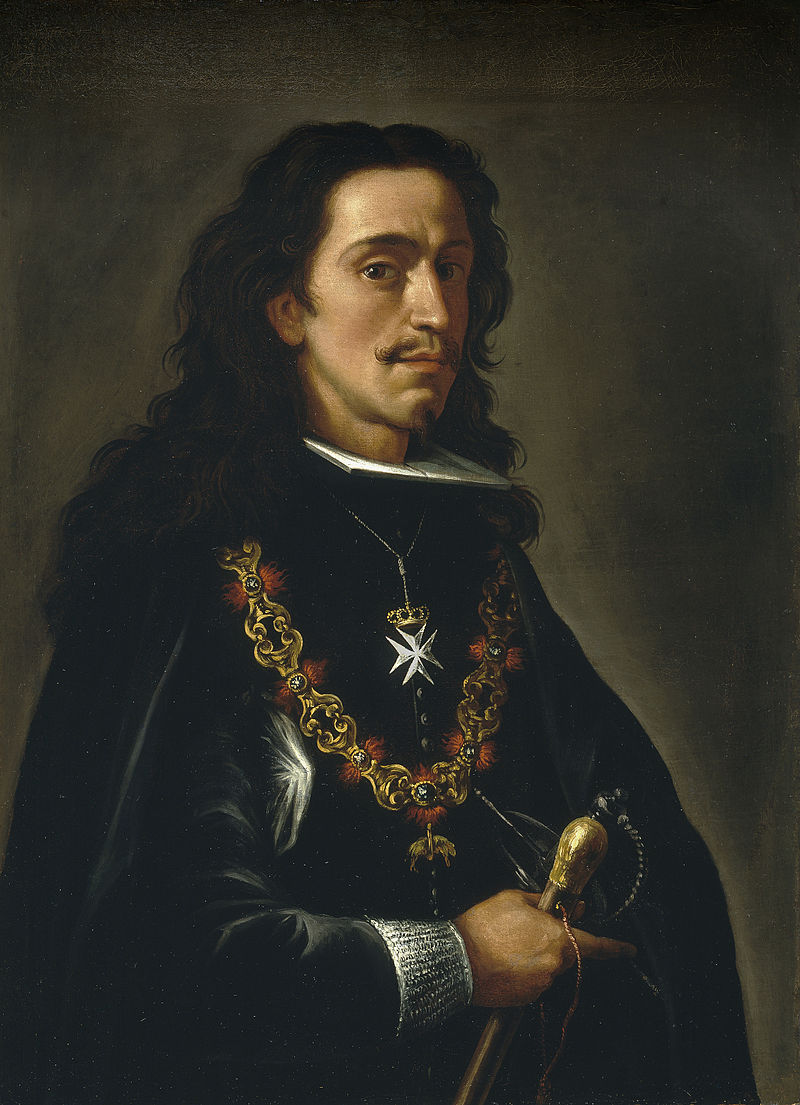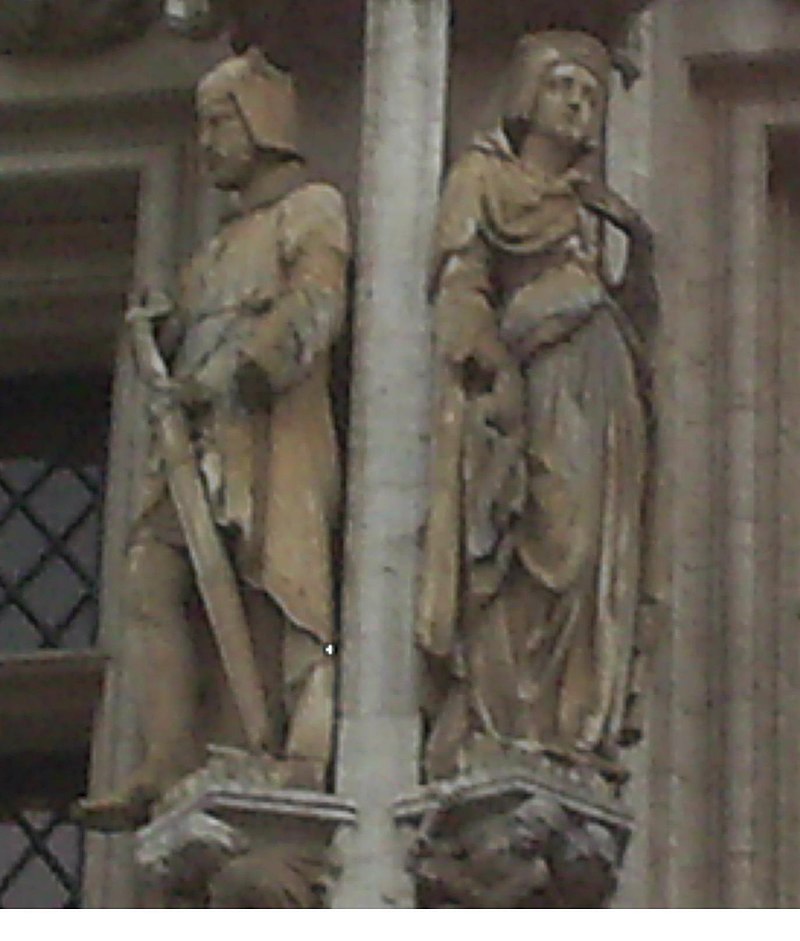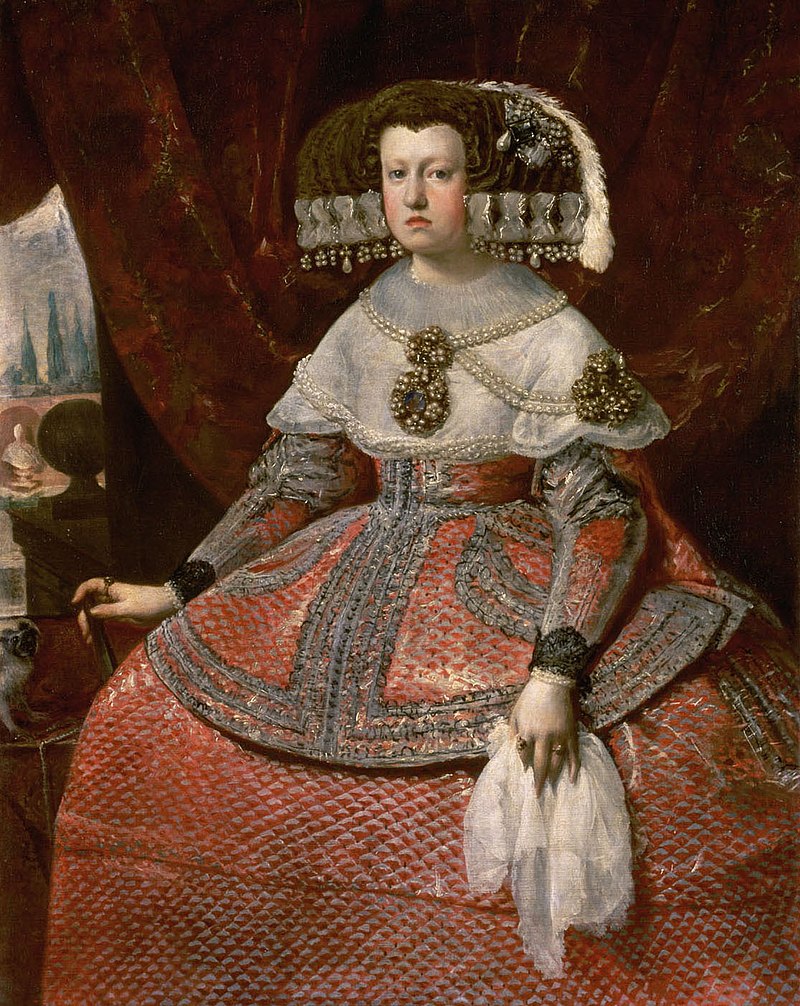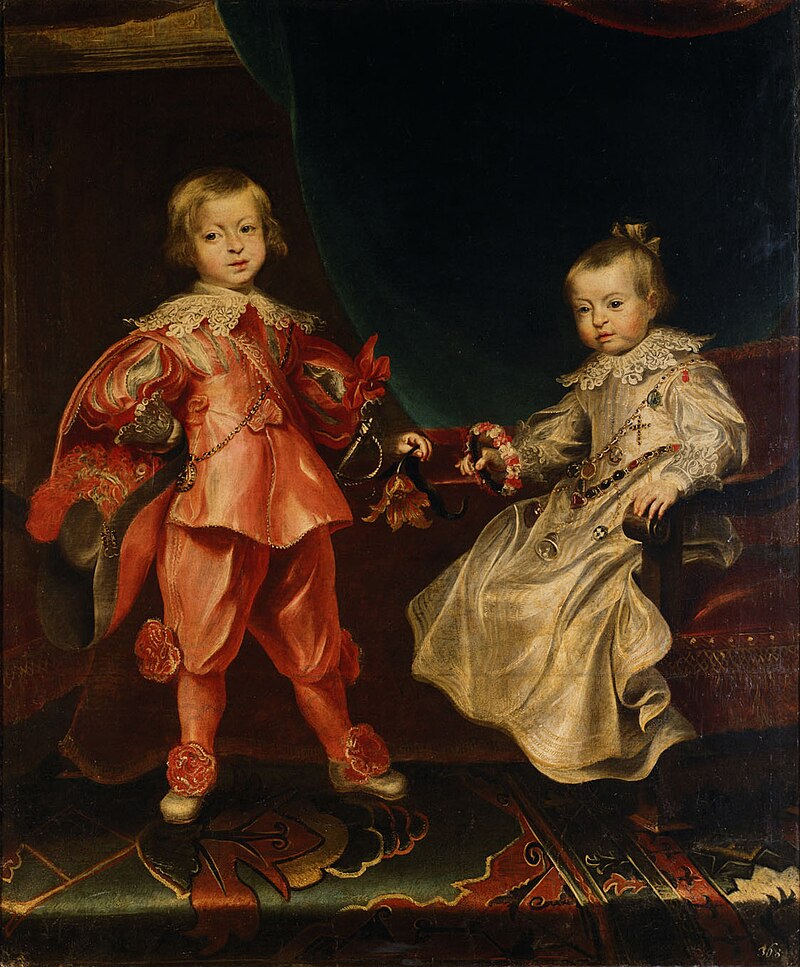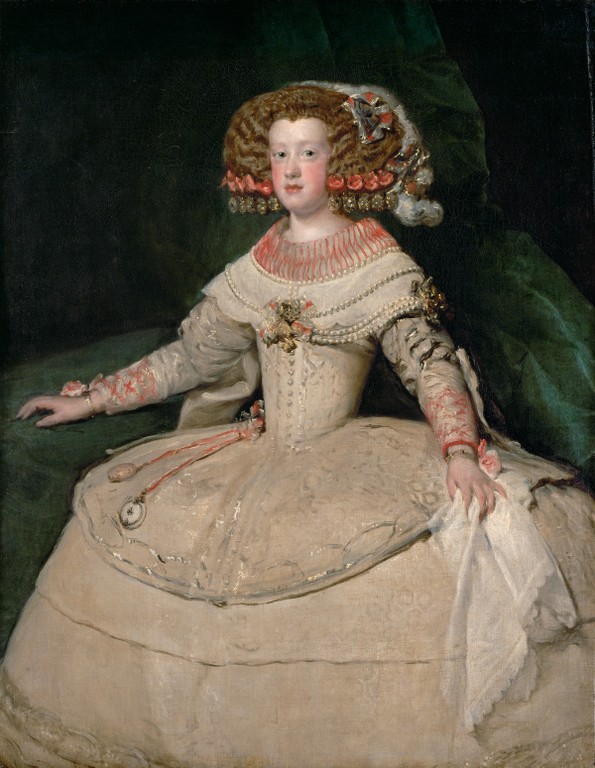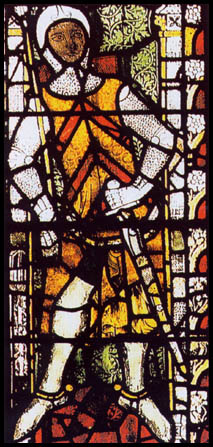by Susan Flantzer
© Unofficial Royalty 2022
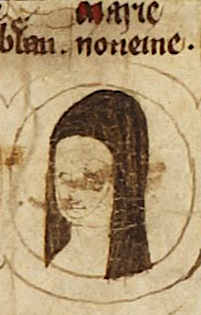
A depiction of Mary of Woodstock from the Genealogical Roll of the Kings of England; Credit – Wikipedia
Destined to be a nun, Mary of Woodstock was born at Woodstock Palace in Woodstock, Oxfordshire, England, on March 11, 1278. During the reign of the House of Plantagenet, their children were often identified by their place of birth, and so Mary was called “of Woodstock”. Mary was the ninth but the fourth surviving daughter and the twelfth or thirteenth of the 14 – 16 children of Edward I, King of England and Eleanor of Castile, the first of his two wives. Mary’s paternal grandparents were Henry III, King of England and Eleanor of Provence. Her maternal grandparents were Ferdinand III, King of Castile and Toledo and King of León, and Galicia and his second wife Jeanne, Countess of Ponthieu and Aumale in her own right.

Early fourteenth-century manuscript showing Mary’s parents King Edward I of England and Eleanor of Castile; Credit – Wikipedia
Mary’s parents had 14 – 16 children. Only five daughters and one son survived to adulthood. The eleven siblings of Mary listed below were those who were named and survived infancy for at least a couple of months.
- Katherine of England (born and died 1264), died in infancy
- Joan of England (born and died 1265), died in infancy
- John of England (1266 – 1271), died in childhood
- Henry of England (1268 – 1274), died in childhood
- Eleanor of England (1269 – 1298), married Henri III, Count of Bar, had one son and one daughter
- Joan of Acre (1272 – 1307), married (1) Gilbert de Clare, 6th Earl of Hertford, 7th Earl of Gloucester, had four children (2) Ralph de Monthermer, 1st Baron Monthermer, had four children
- Margaret of England (1275 – after 1333), married Jean II, Duke of Brabant, had one son
- Alfonso, Earl of Chester (1273 – 1284), died in childhood, heir apparent to the English throne but never became king
- Berengaria of England (1276 – 1278), died in childhood
- Elizabeth of Rhuddlan (1282 – 1316), married (1) John I, Count of Holland, no children (2) Humphrey de Bohun, 4th Earl of Hereford, 3rd Earl of Essex, had ten children
- King Edward II of England (1284 – 1327), married Isabella of France, had four children

Mary’s paternal grandmother Eleanor of Provence, wife of King Henry III; Credit – Wikipedia
Mary’s paternal grandmother Eleanor of Provence, Queen of England, the widow of King Henry III, intended to retire to Amesbury Priory, a Benedictine monastery in Amesbury, Wiltshire, England. Amesbury Priory was a religious community with a nunnery of more than seventy nuns, mostly from noble families, and a monastery with about twenty-five men, serving as priests or monks. Eleanor of Provence suggested that two of her granddaughters keep her company and devote their lives to God by becoming Benedictine nuns. Mary, the eldest daughter of King Edward I who was not yet betrothed in marriage, and her cousin Eleanor of Brittany, daughter of Eleanor of Provence’s daughter Beatrice of England and Jean II, Duke of Brittany were selected. Mary’s mother Eleanor of Castile was strongly against her young daughter being sent off to become a nun. However, King Edward I sided with his mother, and with great reluctance, Eleanor of Castile agreed.
Eleanor of Brittany, three years older than Mary, entered Amesbury Priory in 1281, and her cousin Mary entered in 1285. In August 1285, on the Feast of the Assumption, seven-year-old Mary and thirteen daughters of English nobles were consecrated as future nuns. Mary was formally veiled as a nun in December 1291 when she was thirteen years old. King Edward I and his wife Queen Eleanor visited their daughter Mary in 1286, 1289, and 1290. In 1291, King Edward I visited three times: in February 1291, for the burial of his mother Eleanor of Provence, in September 1291, and again in December 1291 when Mary took her vows as a nun.
Mary lived in comfort in private quarters at Amesbury Priory. In the early 1280s, Mary’s grandmother Eleanor of Provence built a suite of rooms at the priory where she would live with her two granddaughters in a style befitting royalty. Eleanor of Provence arrived at Amesbury Priory in 1286 and lived there until she died in 1291 when she was buried at the priory. By order of her father, during the rest of her life, Mary received an extremely generous allowance, double the amount needed to provide entire households for two knights. She also received a double quota of clothing and a special right to wine from the Southampton docks.
In November 1290, Eleanor of Castile, Mary’s mother, died. Only six of Edward I and Eleanor’s children, five daughters and one son, were still living. The only son, the future King Edward II, was the youngest child and just six years old. King Edward I had to be worried about the succession, and a second marriage with sons would ensure the succession. On September 10, 1299, 60-year-old King Edward I married 17-year-old Margaret of France, daughter of King Philippe III of France and his second wife Marie of Brabant.
Mary had three half-siblings from her father’s second marriage to Margaret of France:
- Thomas of Brotherton, 1st Earl of Norfolk (1300 – 1338), married (1) Alice de Hales, had three children (2) Mary de Brewes, no children
- Edmund of Woodstock, 1st Earl of Kent (1301 – 1330), married Margaret Wake, 3rd Baroness Wake of Liddell, had four children including Joan, 4th Countess of Kent who married King Edward III‘s eldest son Edward, Prince of Wales (The Black Prince) and was the mother of King Richard II of England
- Eleanor of England (1306 – 1311), died young
Despite living in a style that befitted a princess, Mary followed the daily routine of a nun, communal prayer throughout the day and night, private religious reflection, and silence during the day. Although nuns were not allowed to leave their convents except for necessary business, Mary, as the king’s daughter, was an exception. She was allowed to leave Amesbury Priory to visit her family and go on pilgrimages. On several occasions, Mary was enlisted by the priory’s abbess to represent the priory in negotiations with her father.
Mary died on May 29, 1332, aged 54, and was buried in Amesbury Priory church near her grandmother Eleanor of Provence, but all the graves and tombs have been lost. Amesbury Priory was disbanded and the priory church was destroyed during the Dissolution of the Monasteries in 1539 during the reign of King Henry VIII. The priory and its land were then granted to Edward Seymour, Earl of Hertford, later Duke of Somerset, the brother of Jane Seymour, King Henry VIII’s third wife. Some priory buildings were destroyed and others were reused to form a house for the Seymours. The house was rebuilt in 1660 – 1661 and became known as Amesbury Abbey.
This article is the intellectual property of Unofficial Royalty and is NOT TO BE COPIED, EDITED, OR POSTED IN ANY FORM ON ANOTHER WEBSITE under any circumstances. It is permissible to use a link that directs to Unofficial Royalty.
Works Cited
- Flantzer, Susan, 2013. Eleanor of Castile, Queen of England. [online] Unofficial Royalty. Available at: <https://www.unofficialroyalty.com/november-28-1290-death-of-eleanor-of-castile-first-wife-of-king-edward-i-of-england/> [Accessed 22 October 2022].
- Flantzer, Susan, 2016. King Edward I of England. [online] Unofficial Royalty. Available at: <https://www.unofficialroyalty.com/king-edward-i-of-england/> [Accessed 22 October 2022].
- Jones, Dan, 2012. The Plantagenets. New York: Viking.
- Mary of Woodstock (2022) Wikipedia. Wikimedia Foundation. Available at: https://en.wikipedia.org/wiki/Mary_of_Woodstock (Accessed: October 22, 2022).
- Мария Вудстокская (2021) Wikipedia. Wikimedia Foundation. Available at: https://ru.wikipedia.org/wiki/%D0%9C%D0%B0%D1%80%D0%B8%D1%8F_%D0%92%D1%83%D0%B4%D1%81%D1%82%D0%BE%D0%BA%D1%81%D0%BA%D0%B0%D1%8F (Accessed: October 22, 2022).
- Williamson, David, 1996. Brewer’s British Royalty. London: Cassell.
- Wilson-Lee, Kelcey, 2019. Daughters of Chivalry: The Forgotten Princesses of King Edward Longshanks. New York: Pegasus.







